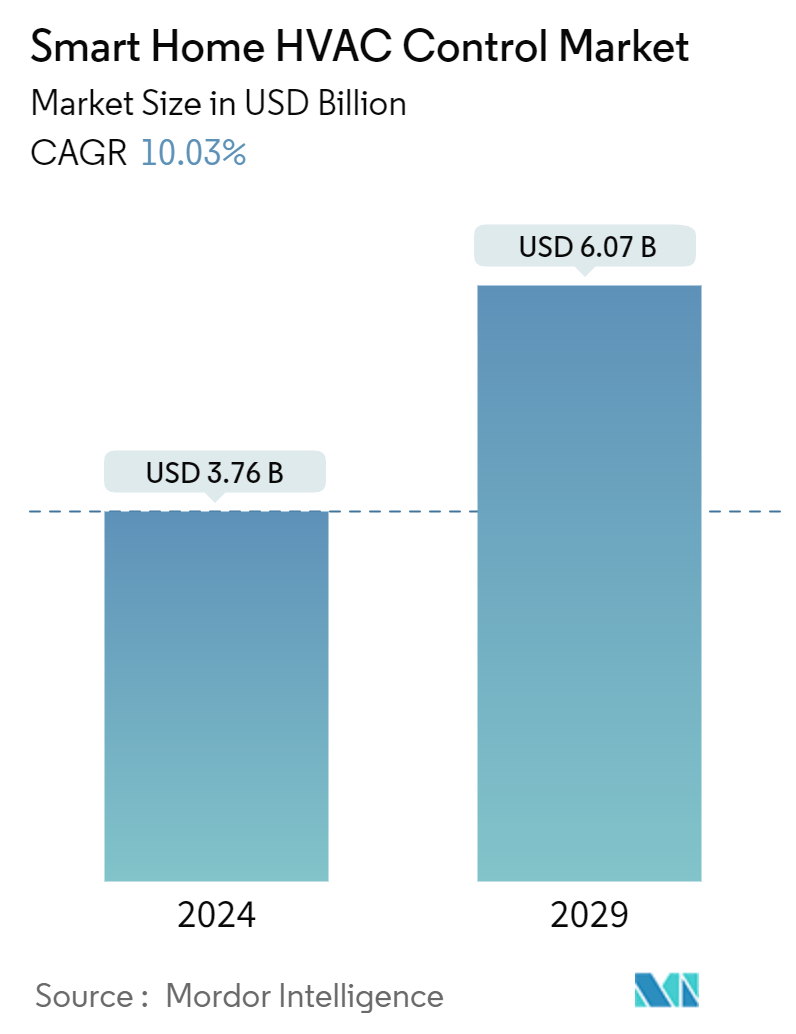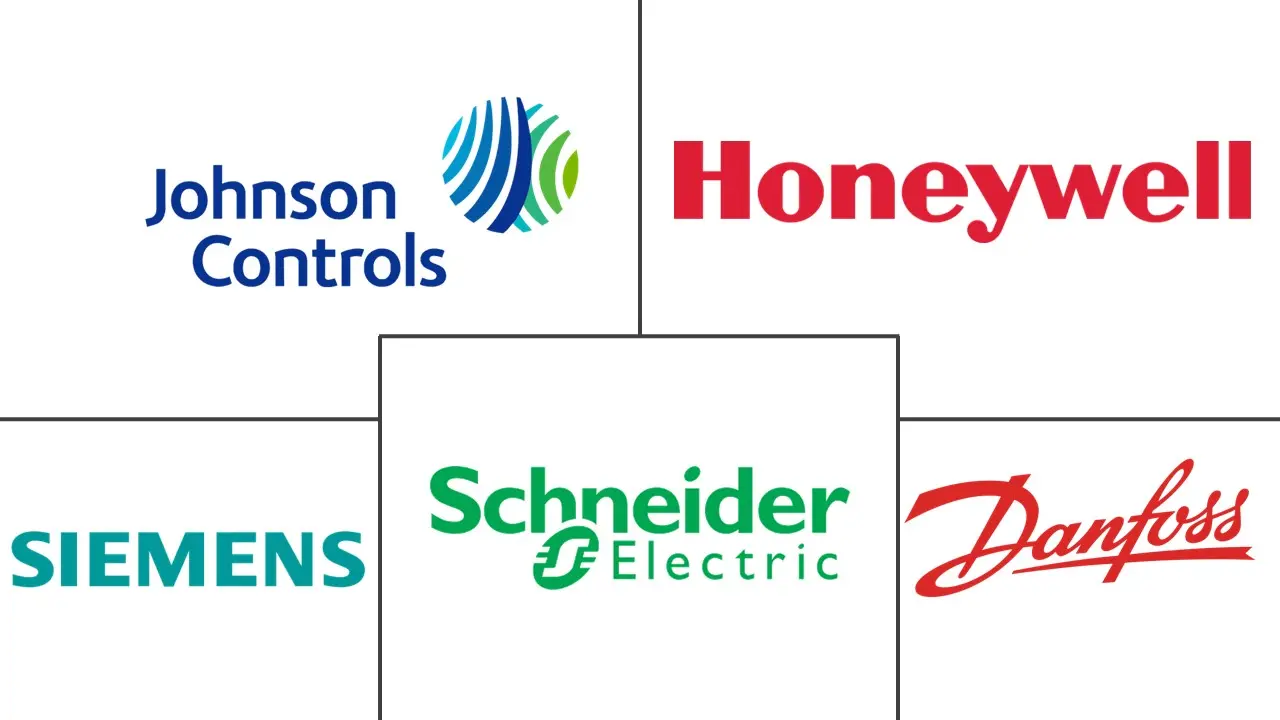Market Size of Smart Home HVAC Control Industry

| Study Period | 2019 - 2029 |
| Market Size (2024) | USD 3.76 Billion |
| Market Size (2029) | USD 6.07 Billion |
| CAGR (2024 - 2029) | 10.03 % |
| Fastest Growing Market | Asia Pacific |
| Largest Market | North America |
| Market Concentration | Medium |
Major Players
*Disclaimer: Major Players sorted in no particular order |
Smart Home HVAC Control Market Analysis
The Smart Home HVAC Control Market size is estimated at USD 3.76 billion in 2024, and is expected to reach USD 6.07 billion by 2029, growing at a CAGR of 10.03% during the forecast period (2024-2029).
Smart home technology transforms residential interactions, enhancing convenience, efficiency, and security. This evolution has significantly increased the demand for smart HVAC control devices, which utilize advanced technology and interconnected systems. The smart thermostat, the core component of this integration, functions as the central control unit of the HVAC system. Equipped with sensors and Wi-Fi capabilities, smart thermostats facilitate communication between other smart devices and the HVAC unit itself.
- The increasing trend of smart home consolidations drives the market's growth. A recent industry survey by HiddenWires, comparing data from 2021 to 2023, highlights the consistent growth and evolving preferences in the smart home sector. Notably, the survey indicates a significant surge in smart home interest, with nearly half of respondents reporting a doubling interest over the past five years.
- Moreover, the surge in residential construction projects and the escalating demand for sustainable HVAC systems are key factors propelling the global demand for HVAC control devices. For instance, integrating HVAC systems with other smart devices, such as window sensors or occupancy detectors, creates a responsive ecosystem. This ecosystem can automatically pause the air conditioning if a window is left open, resuming only when the window is closed. Smart thermostats, another component, learn user preferences and adjust temperatures to save energy when occupants are away or asleep. They also offer insights into energy usage, aiding in making informed decisions to reduce utility bills.
- Aside from the benefits of convenience and energy efficiency for homeowners, smart home technology presents advantages for service providers. Remote monitoring allows for proactive maintenance, identifying potential issues early to prevent major breakdowns. This reduces downtime and costly repairs and enhances overall customer satisfaction.
- The rapid advancement of smart home technology is poised to drive further improvements in HVAC controls. By integrating with AI algorithms, these controls will offer predictive energy consumption analysis, enhancing efficiency and driving up demand. Moreover, smart home HVAC systems can evolve as technology progresses to support zoned heating and cooling. This feature empowers users to segment their homes into distinct zones, each with its temperature control. This ensures personalized comfort and prevents energy wastage in unoccupied areas.
- Yet, the rising costs and complexities associated with installing smart home HVAC systems are poised to persist as significant challenges impeding the market's growth. Furthermore, retrofitting smart home HVAC control systems is an intricate and expensive endeavor, demanding a substantial number of work hours, thus elevating the overall cost.

